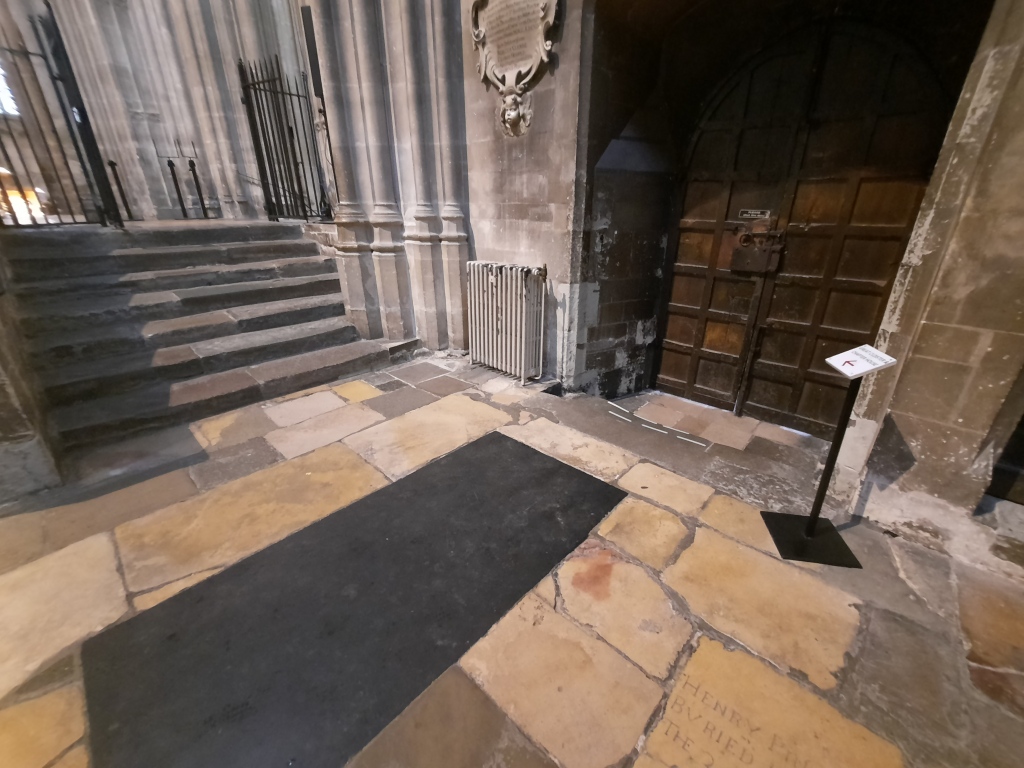During a recent rainy Monday morning, I popped into Canterbury Cathedral, a UNESCO world heritage site near to where I live.
My car was having its MOT nearby, and with the rain showing little sign of abating, I was hopping from place to place for shelter. The coffee crawl was fun to start with but by about Americano number four I wanted to head somewhere a bit different, and looking out the window towards Cathy’s Bell Harry tower, I felt inspired to be a bit of a tourist for the day, and made my way over.
I have visited the Cathedral tonnes of times over the years. It has played a notable part in our family history, and there’s so much more I could write about it beyond the content of this post, but those can be stories for another day.
Instead, for now, I’ll just tell you a little anecdote about a particular tile in the photo above, the tile with the reddy-orange stain on it next to the black rug.
During one of my first visits to Canterbury Cathedral, in the early 1990’s, I was too young to really understand anything beyond a very basic, watered down version of history. I knew that the Cathedral was famous for being the site of the murder of somebody called Thomas Becket – who had clearly irritated somebody (King Henry II it turned out) – and that it had attracted many visitors due to the belief in miracles which took place at the site after he was killed.
It all sounded quite scary and gory to a seven year old, like what might happen on Eastenders or one of Bowser’s Castles, but nonetheless it was intriguing too. As we walked around the particular area where the famous assassination had taken place, my older sister pointed down at the reddy-orange stain and looked at me with a grimace:
“That’s the stain from his blood when he was killed.”
Suddenly, a scary story became scarier and my infant self felt a shiver down her spine. Numerous questions abounded within – will we see his ghost? Will we have our heads chopped off too, if we stand here too long?
Well, evidently we didn’t, as I sit here writing this almost thirty years later, but there was certainly one long-term impact of this narrative which has made me look incredibly foolish over the years, and that’s the fact that it was only an embarrassingly few years ago that I realised that my sister hadn’t been telling the truth about the unusual stain on the floor.
It had absolutely zip-all to do with Becket, not then, and certainly not ever! I have lost count of the number of people I have given this misinformation too over the decades since; no wonder my Religious Studies teacher didn’t look overly impressed as I shot my hand up in class during year 10 as we learned about Becket, to tell a bunch of nonplussed teenagers of what they could see at the Cathedral.
And there’s an interesting lesson in all of this I suppose. Not to believe everything you’re told, for sure, but on the flipside I ask myself: would I have found the Cathedral as interesting as a seven year old if it weren’t for my sister’s gory story? Probably not. Would that one piece of stone still make me smile and recall memories of a family day out in 1992, thirty years later? Definitely not.
So yes. There’s a lot of history in Canterbury Cathedral. And that small, almost invisible speck, is mine.

